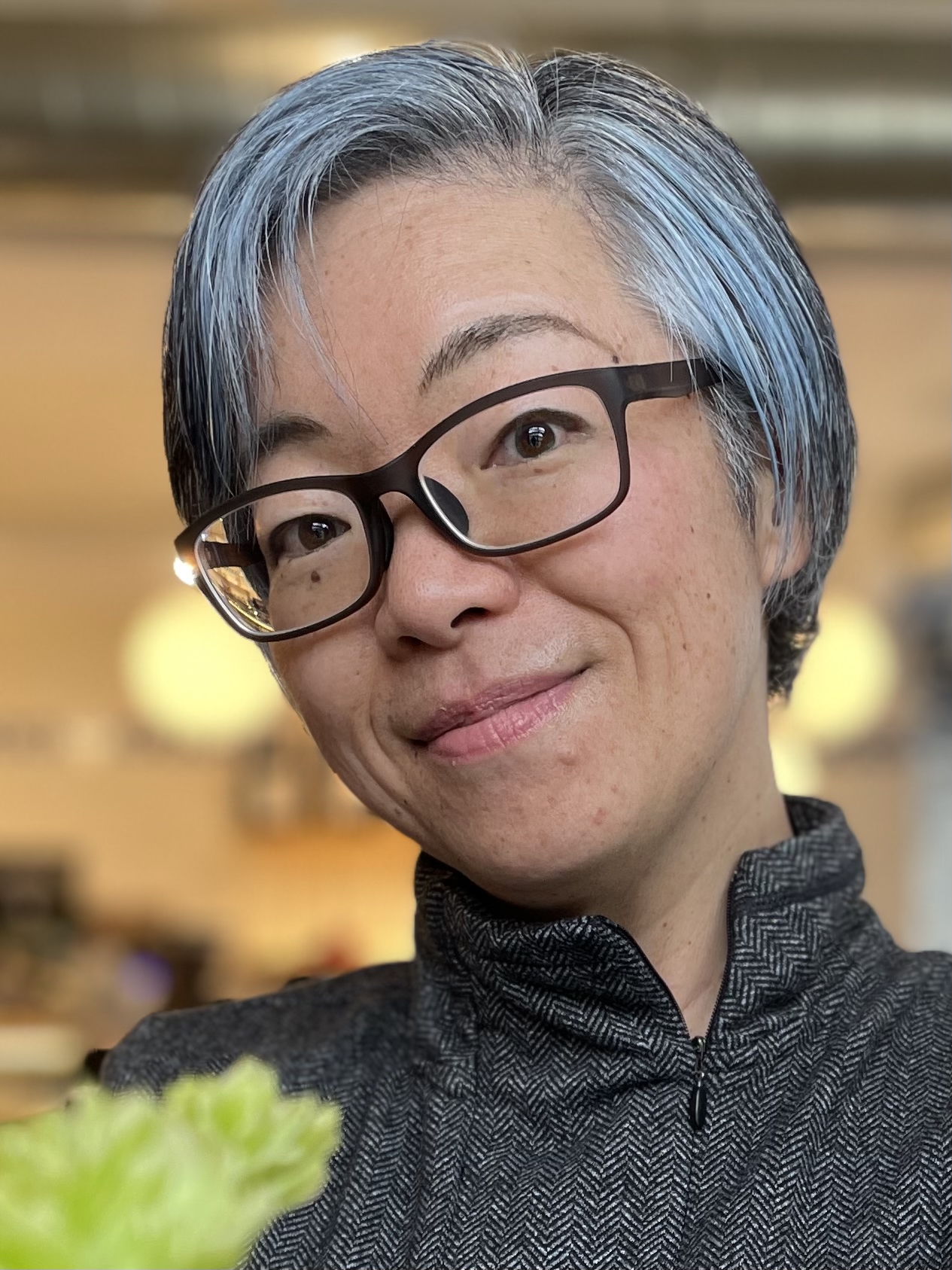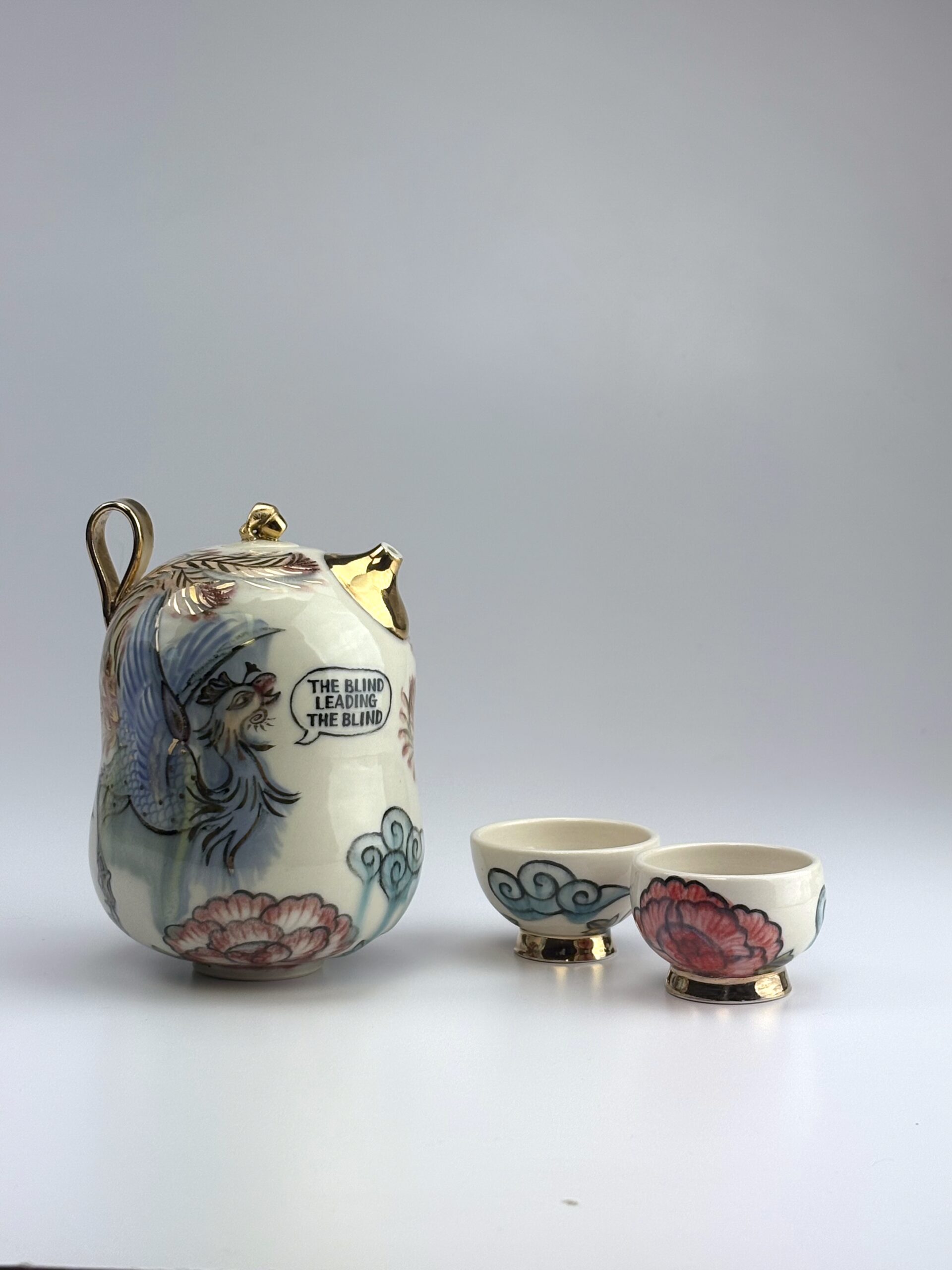“Village Expert” teapot, Genuine Fake China series
No Longer Available
Completed
2025
Medium
Wheel-thrown mid-range porcelain, Sgraffito, carving, glaze painting, gold luster, Cone 5 and 018 oxidation firing
Dimensions
3.5 x 3.5 x 5.25"
Description
It has been three decades since I moved to the United States. As I grow older and stop worrying about the small things I once obsessed over, translating one culture into another—and uniting them within my limited vocabulary—has become my hobby. Eventually, I decided to take this approach to ceramic art as well. How can I create ceramic works that unite us, connect us, and serve us all? Can I craft objects that offer hope and a sense of unity? Hopefully—and possibly—in a subtle, personal way. This series is my quiet resistance to the current political climate of isolation and confrontation. More than ever, we need reminders of how similar we are. Exchanging stories and engaging in small conversations are far more meaningful than abstract fear and anger. Many conflicts begin with fear of the unknown, but that fear can be reduced simply by getting to know each other. If we learn that strangers eat like us, think like us, and live like us, we might be able to relax a little more. Thus, my Genuine Fake China series has two sides: one featuring Chinese or Japanese proverbs, the other presenting an English equivalent—or a saying with the same nuance. It is my attempt to bridge the gap and spark conversations about the profound ideas we share across time, language, and culture. While learning American English, I discovered that proverbs encapsulate the essence of the culture and language people use—a condensed reflection of their philosophy. If a proverb exists in two languages and conveys the same idea, I feel confident that those two groups of people think alike, at least on that subject. If the same saying appears in multiple cultures, it serves as proof that it is a universal truth. It is easy to notice our differences because they always stand out. But recognizing our similarities takes effort—because they are so natural to us. My goal is to blend well-known fables, stories, songs, poems, and proverbs into my functional works, utilizing their physical presence to encourage casual conversations in daily life. From that perspective, the goal of this series is not simply to create functional ceramics. Function itself is used as a design element—like size or color—to enhance the delivery of the message. For example, a tea set was chosen to emphasize the idea of enjoying peaceful conversations together over tea and snacks, as a symbol of harmonic time with others. In a way, these works mimic functional wares on purpose—inviting people to observe and interact with them more casually. I hope this series serves as a reminder that, no matter where ideas originate, things that resonate with us eventually will eventually become universal—if they have a good use. So please, use my teapot to serve a cup of green tea—maybe from Starbucks.About this Artist

Yoko Sekino-Bove
Yoko Sekino-Bové was born in Osaka, Japan. She graduated from Musashino Art University in Tokyo, Japan, with a Bachelor of Fine Art degree in graphic design before moving to the United States. She worked as a commercial designer in Los Angeles before her passion for ceramic art took her onto a new path. She received a Master of Fine Art degree in Ceramics from the University of Oklahoma, and served as an artist-in-residence in the ceramic department of the Armory Art Center in West Palm Beach, Florida for a year. In 2005 Yoko moved to Washington, Pennsylvania, and she started working from the home studio while teaching at local colleges and art centers. Her porcelain work has been included in prestigious exhibitions nationally and internationally. She was selected as one of the “emerging artists 2011” by the Ceramic Arts Daily Council in the United States. She presented a solo exhibition…
View Full Artist Bio
Contact Us
For inquiries, comments, and acquisitions, please feel free to contact us any time. We welcome your input and conversation.
